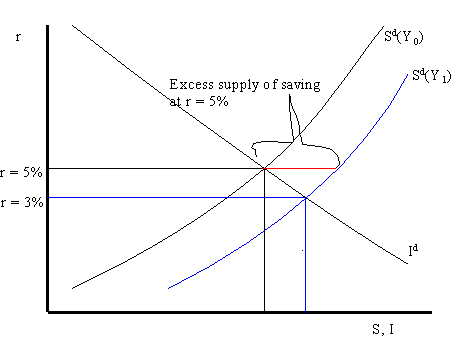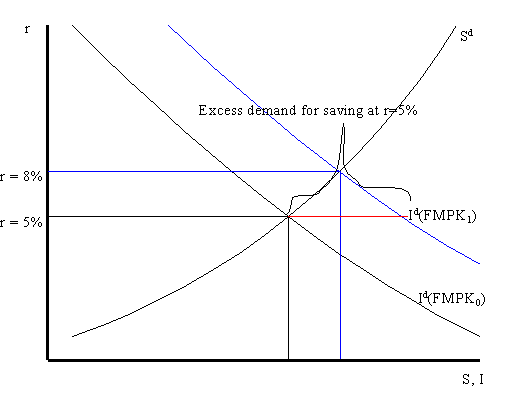
Reading: AB, chapter 4, section 3.
Increase in current income (Y)
Suppose the goods market is initially in equilibrium with r* =
5% with current income at Y0 as described in the
diagram below. Now suppose that current income (Y), which is
equivalent to current output, increases from Y0 to Y1.
This results in a rightward shift of the desired savings graph as
depicted below.

At the real interest rate of 5% there is now an excess supply of saving which puts downward pressure on the real interest rate as banks try to create more loans. As r falls, we move along both the desired saving and investment graphs toward the new equilibrium at r = 3%. The end result of the increase in Y is a lower real interest rate and a higher level of both saving and investment.
Now consider an increase in FMPK due to an increase in
business confidence about future profits. This could occur, say,
if firms expect that tax laws favoring business may be enacted in
the near future. The increase in FMPK leads to a rightward shift
up in the desired investment graph holding everything else in the
model fixed as illustrated in the graph below.

At r = 5%, desired investment is greater than desired saving so that there is an excess demand for saving. Accordingly, banks are able to raise real interest rates due to the increased demand for loans. As r rises, we move up along both the saving and investment graphs toward the new equilibrium at r = 8%.
[Previous Slide] [Contents for Lecture 6] [Slides from Lectures] [301 Homepage] Last updated on July 15, 1996, by Eric Zivot.